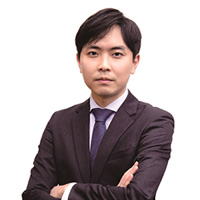What ultraluxury hanok looks like, if built right
By Choi Si-youngPublished : July 27, 2024 - 16:00

YEONGWOL, Gangwon Province -- Luxury travel is incomplete without a stay at a high-end hotel, where the pampering includes exquisite food, decor and seclusion, while sessions for restoring mental and emotional wellness enrich the experience.
All that is available at the Hanok Heritage House in Yeongwol County, Gangwon Province -- the latest example of how far entrepreneurs are willing to go when refashioning “hanok,” the traditional Korean house.
The architect behind the $130 million project -- which involves a 337,190 square meter plot nestled in the mountains, roughly the size of the National Assembly compound in Yeouido -- speaks of a space that delivers the “comforts of home.”
“The aim is a physical space that is as cozy as possible,” Cho Chung-il, president of the Hanok Hotel & Resort, said during a preopening tour of the complex in early July.


Hanok reborn with tech
Cho is also the chief executive officer of KONA I, a Kosdaq-listed company globally known for its “smart cards” used for online and offline settlements and payments, as well as ID authentication. The firm has a mission statement: Benefit the world through technology.
This permeates every corner of the three hanok units currently up and running. The hanoks average 750 square meters per unit, each seven times the average living space of a four-person Korean household.
Jongtaek 1, Jongtaek 2 and Seondoljeong -- each built to accommodate up to eight or ten guests and featuring a private sauna, garden or terrace -- boast the finest pine timbers featuring a lacquered appearance.

There is hardly any hint of a musty smell -- a long-running complaint that reinforces stereotypes of hanoks being something to look at from a distance, but not live in.
“It all comes down to how we dry the wood,” Cho said of his struggle to come up with his own technology to “microwave” timbers to maintain the right moisture level, a process that takes seven years. Eighteen woodworkers -- some of whom are Korea’s “master carpenters” -- joined him in the effort.
Sound- and bug-proofing windows came next. Hanji windows, or windows using traditional Korean mulberry paper rather than glass, were replaced with tempered glass windows with near-transparent fly screens for an unobstructed view.

According to Cho, Hanok architects have to think about employing the latest technological improvements to attract people used to modern-day luxuries. They can therefore appreciate not only the beauty of hanoks, but the practicality Koreans had long embraced when living in them.
“Our hanok complex will be completed by early 2028 when 30 hanok units are up and running,” Cho said. Fifteen units, including the three already completed, will be for members-only, exclusive to those willing to put down a deposit for a super-luxury hanok stay. The other 15 blocks will operate as a hotel.

Holistic and wholesome
Cho Nam-hee, the vice president of the Hanok Hotel & Resort and Cho Chung-il’s daughter, pointed out that the vast hanok complex will be all about wellness and healing, for the mind as well as the body.
The “Sound Bath” program, a musical session meant to wash away mental and emotional toll, is one way, she believes, to help facilitate that.
The participants, sitting on a couch or lying on their backs with eyes closed, are immersed in sounds from instruments, such as crystal singing bowls and chimes, played by a practitioner. An hour-long meditation is accompanied by a Korean dessert tasting.

“It’s beyond relaxation,” the practitioner said. “Our mind is just as important and needs to be refreshed once our body has been fully rested,” the practitioner, a Korean Canadian, added, speaking in both Korean and English.
According to Chung-il, plans are underway to set up a second Hanok Heritage House in New York, followed by Paris.
The 62-year-old entrepreneur said he finds joy in committing himself to empowering people to identify with hanok, and grasp what the traditional architecture really is and can do.
“It’s the comforts of home, a space that overwhelms you once you step in,” he said.






![[Hello India] India makes fresh overture to lure Korean financial firms](http://res.heraldm.com/phpwas/restmb_idxmake.php?idx=644&simg=/content/image/2024/09/08/20240908050069_0.jpg&u=20240908191359)

![[Weekender] Feeling lazy but craving tteokbokki? Try a meal kit](http://res.heraldm.com/phpwas/restmb_idxmake.php?idx=644&simg=/content/image/2024/09/06/20240906050704_0.jpg&u=)










